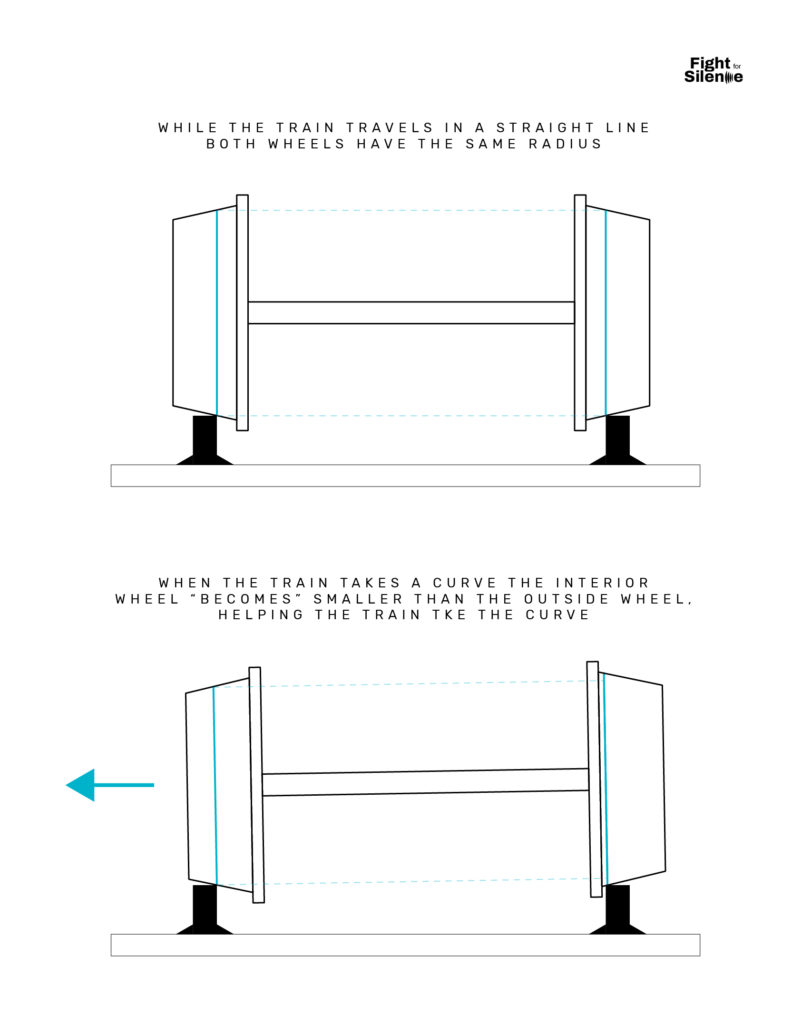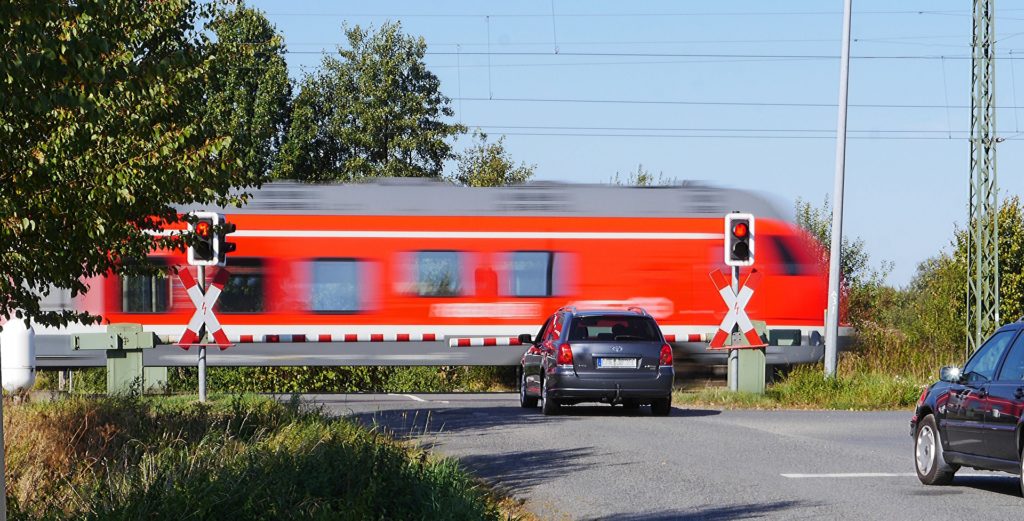
Why are trains so loud?
Trains are great. I personally love to travel by train and always choose to do so instead of taking the airplane when possible. They take you from city center to city center, they require minimum to no check-in, and the legroom is great. One of the few things that bother me about the train though is how noisy they are. But why are trains so loud?
I’m not even talking bout old diesel trains. Even the newer, all-electric ones are noisy.
The answer to this question basically comes down to the fact that trains run on steel wheels, have no differential, and use super powerful honks. If that’s enough for you then you are done. But if you don’t know what a differential is, or if you want to dig deeper into this subject, stay with me.
As with cars, and other vehicles, most of the noise produced by trains doesn’t come from the engine, as one could think at first. It comes from the friction between the wheels and the ground. Trains are unique in this sense. Unlike cars, bikes, etc. trains have metal wheels and travel on metallic tracks.
All that metal rubbing against each other is part of the problem, and we’ll get into the details of it in a moment. But there’s another peculiarity about trains that contributes to making them so noisy. That is the fact that their wheels don’t have a differential.
What is a differential?
Cars, trucks and other vehicles with wheels all have differentials.
Conceptually speaking, the differential helps a vehicle turn by allowing the interior wheels and the exterior wheels to rotate at different speeds.
And why do we need this?
Well, imagine you are in your car in an empty parking lot. You get in the car, turn the wheel all the way to the left and start moving forward. In a short while you will complete a full circle, like the one in the illustration below. Notice how the exterior wheel draws a larger circle? That means it has to cover more distance than the interior wheel, and since all wheels on a car are the same size that means the exterior wheel must turn more times than the interior ones in order to complete the circle.

If the interior and exterior wheels were solidary and turned both at once, the vehicle would have a much harder time turning.
If you are interested in learning more about differentials and how they work, the below video explains it very well.
Why do trains not have a differential?
Trains don’t have to take sharp turns, and that’s why they manage to get away with no differentials. Instead, they rely on a smart geometry trick to take light curves smoothly. The trick is conical wheels, and a distance between wheels that allows the train to position itself in a way that takes advantage of that shape.
Take a look at the (exaggerated) diagram below. When a train turns to the left, the centrifugal force pushes the train to the right. When this happens, the larger part of the conical wheel on the outside is in touch with the rail, while for the interior wheel, it’s the opposite. When this happens the interior wheel becomes, in a way, smaller than the outside wheel. And given an equal number of turns, a smaller wheel will cover less distance than a larger wheel. That’s how trains manage to take light curves smoothly.

But what happens when this is not enough to make the train turn? If a train has to travel over a stretch of rails forming a curve sharper than what the conical wheels can absorb, the wheels will start to skid. Depending on different variables it can happen that the interior wheel has to turn without advancing, or that the outside wheel is dragged along the rail in order to cover more distance than it could by simply turning.
WITHOUT A DOUBT, THIS IS THE MAIN REASON WHY TRAINS ARE SO LOUD!
If the rubber wheels of a car or motorbike are noisy when they skid on the pavement, imagine a train, several tones heavy, skidding its metal wheels on a metal rail!
This is why trains are especially loud when approaching stations, where they might need to take sharper turns in order to change tracks. This is also why stations are almost always set in straight stretches of the track, never in curves, as the noise would make that station a very uncomfortable place to be at.
Why do trains have steel wheels?

Now that we know that metal wheels are the main reason why trains are so noisy, you might be asking yourself, why do trains have steel wheels in the first place?
That’s an excellent question. There are a number of reasons. The main ones are durability, resistance, reliability, cost and performance.
Trains are heavy vehicles, especially cargo trains. Steel wheels are able to transfer that weight to the rails much more efficiently than rubber wheels would. In order for a rubber tire to be able to withhold the weight of a train it would have to be quite wide (to spread the load). This would mean the rain would also have to be wider, and that would make building train tracks much, much, much more expensive.
Changing a car tire is an inconvenience, but changing the wheel of a train is a whole different story! Steel wheels are way more durable than rubber ones, plus they do not puncture, which means the trains can run smoothly without having to worry about wheels blowing up or wearing down.
Steel wheels offer less resistance than rubber tires. Because steel is a lot harder than other materials it doesn’t deform as much, which means the point of contact with the rails remains as small as possible, reducing the resistance that the train has to overcome every time it starts moving.
Lastly, there’s consistency. Some trains travel very long distances. Just within the states a train can go from freezing temperatures to extreme heat in just a matter of hours, and from wet to dry several times per day in a matter of seconds. Steel wheels in combination with steel rails offer a much more consistent behavior than any other combination of materials. For example, regular rubber tires will have a hard time running on ice, steel wheels won’t.
How do smooth metal railroad train wheels keep from slipping on metal tracks?
When you think about traction our intuition tells us that soft materials (like rubber) will perform better, while hard ones (like steel) are more slippery. That is 100% correct. Yet trains manage to move around with steel wheels on steel tracks… How do they do that?
One of the variables in the formula to calculate reactions is downforce. That is the mass of the vehicle multiplied by the force of gravity. The force of gravity is consistent for every vehicle (on earth), but when it comes to mass… trains are VERY heavy!
So, trains basically manage to overcome the low friction of steel by applying a shitload of downforce (weight). Actually, if heavy trains had softer wheels, the combination of their weight with higher friction materials would make it much more difficult for them to start moving.
Fun fact, there are some lightweight trains that actually do run on rubber tires. There are several subway lines in Paris that mount them. However this is only possible for very lightweight wagons, and the solution hasn’t really taken off.
Why are train horns so loud?
Train horns go up to 110 decibels, which is very loud! On top of having these super powerful horns, trains are required by law to use them for 15 to 20 seconds before reaching any grade crossing. This is to alert any truck, car or other vehicles that might be standing on the tracks that the train is approaching, and avoid accidents.

Because of how heavy they are and the speeds at which they travel, trains are not able to stop when they see an obstacle on the tracks even if they want to, no matter how hard they try.
In this case the low friction of their steel wheels would not be able to transmit enough force from the wheel to the rail in order to stop the vehicle in any reasonable amount of time, or distance. If the driver tried to stop the train the wheels would immediately start to skid, creating an excruciating noise, and it would still hit the obstacle at a considerable speed.
That is why trains can’t “wait and see”, they must assume there’s going to be something or someone at that grade crossing and must do everything in their power to avoid that potential collision, by horning for 20 seconds before they reach that critical point.
Trains are also required to blast their honk in short blasts if they see anything on the track, regardless of whether it’s an animate or inanimate object. Animals usually get scared when they hear the horn of a train (who can blame them) and run away off the tracks.
Conclusion
Trains have powered America since the times of Vanderbilt, and if we as a country play our cards well trains can also be a big part of our future, both for moving cargo from one point to another as well as for business or leisure travels.
Newer trains are certainly quieter than the old ones, but they still remain quite loud. We can only hope that as technology keeps evolving engineers will keep noise pollution in mind and come up with new ways to make our trains quieter and safer.

[…] not forget that trains in general are loud, mainly because they have steel wheels running on steel track and because of their particular […]